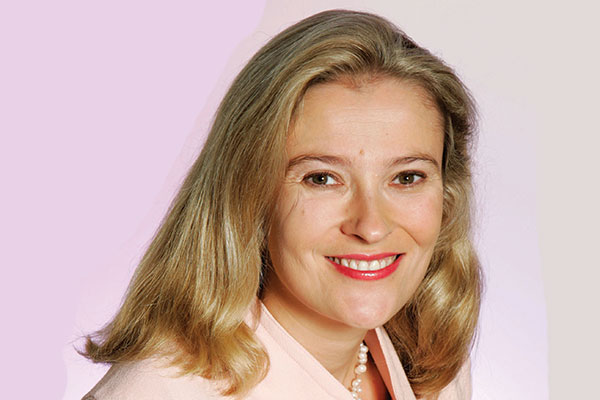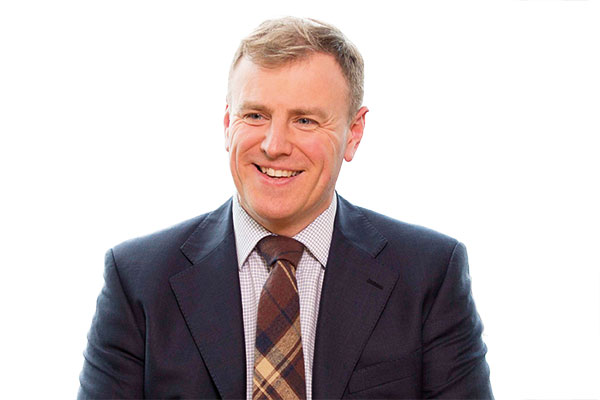Pension income in the time of Covid-19: how to find income in the ‘new normal’
UK equity income investors face dividend cuts of 40% this year and a long road back to 2019 levels. Hel…
14th July 2020 09:23
by Helen Pridham from interactive investor
UK equity income investors face dividend cuts of 40% this year and a long road back to 2019 levels. Helen Pridham assesses options and checks how the £10,000 income portfolio is faring.

This year has presented income investors with a perfect storm. Global stock markets plunged in the first quarter in reaction to the spread of coronavirus. Interest rates were cut to rock bottom. Leading UK companies announced that they were reducing or making no dividend payments to focus their resources on supporting their employees and ensuring their businesses would pull through the crisis. For investment trust investors who rely on their dividend income, the future has started to look decidedly less secure.
Nevertheless, investment trust investors are better placed than many, for the short term at least. As the Association of Investment Companies (AIC) has pointed out, the ability of investment companies to reserve up to 15% of their income each year has helped them to carry on raising dividends through previous market downturns such as the 1987 crash, the dotcom bubble bursting in 2000 and the 2008 financial crisis.
These reserves are not limitless, however, so the environment for income investors may get tougher. Sebastian Lyon, investment manager for Personal Assets, pointed out recently: “We suspect…when the dust settles and dividends are reinstated, they will not return immediately to anything like their previous levels. Investors may be starved of income for some time as shortfalls become structural. Dividend growth will re-emerge but from a lower, more sustainable base.”
One way of boosting your income in the meantime is to withdraw some past capital gains from your investment trusts. Don’t do it too soon. When first setting up an equity income portfolio, one of the key pieces of advice is to hold around two to three years’ worth of required income in cash to get you started. So if you are looking for, say, £10,000 of annual income from your investments, keep £30,000 in cash at the start. This is money you can dip into in the early years if dividends are below par.
After three to five years as your investments start to grow, you can review the situation. Make sure your portfolio is well diversified geographically. Even after falls in global markets in February and March, average three-year performance figures for global sector trusts were positive. With a diversified portfolio you can top-slice profits in areas that have gained ground.
Another argument for dipping into your capital gains from time to time is that if you have holdings of trusts outside an Isa or self-invested personal pension (Sipp), you can make use of your annual capital gains tax allowance, which means that part of your ‘income’ will be tax-free.
- The trusts that offer the most exciting long-term growth prospects
- Global small cap trusts: which one is best?
Spreading your investment around
Being open to the idea of withdrawing capital gains to supplement the natural income you receive from income-generating investment trusts also broadens your choice of trusts. There are a variety of sectors, such as technology, where the focus is on achieving capital growth and trusts in these areas usually have low or non-existent yields.
Mick Gilligan, partner at stockbroker Killik & Co, points out: “If you are prepared to consider taking capital withdrawals, you can have a broader spread of trusts in your portfolio. You have a lot more optionality about where you invest. If you focus on higher-yielding trusts, you tend to end up with a portfolio that is very biased towards the UK. You won’t have much in emerging markets or sectors such as technology, or even in defensive areas – with trusts such as Capital Gearing and Personal Assets only having yields of around 1%.”
Among the other trusts that income investors may overlook because of their low or non-existent yields are several on Money Observer’s own Rated Funds list, including global trusts such as Monks and Scottish Mortgage, as well as specialist trusts including Allianz Technology,Pantheon International and Worldwide Healthcare.
But not everyone agrees with the idea of supplementing income with capital withdrawals. Doug Brodie, managing director of Master Adviser, specialises in constructing income portfolios from investment trusts such as Foreign & Colonial, Lowland and Murray International.
He is confident that these trusts will be able to continue paying their dividends through the current crisis thanks to their income reserves. He explains: “We have stress tested our holdings and believe they will be able to maintain their dividend payments for up to three years even if their income falls.”
He is against withdrawing capital gains, as it reduces the number of shares investors hold. Brodie adds: “If there are sequential falls in the market and you are withdrawing capital it can be a downward spiral from which your investments won’t recover.” He likens capital withdrawals to “cutting down a tree in an orchard, rather than picking the apples – when the tree is gone there are no more apples”. He admits that as a result investors may miss out on certain investment areas, but they must “think about their objective, which is income”.
Gilligan, on the other hand, believes that if you are disciplined about how much capital you take there will not be a problem. He explains: “If you take the view that over the long term, an equity investment will generate an average return of 5% on top of inflation. Take away, say, 2% for costs, then you have 3%. Although there may be ups and downs in market returns, it should even out over the long term, so if you aim to withdraw no more than this it seems like a sound approach to me.”
How do you time your withdrawals? Gilligan suggests that if you can spread your withdrawals evenly over each year you can avoid taking all the money out at the wrong time, when the market is at its lowest point – “like a kind of reverse pound cost averaging”, he says.

Another approach
Instead of making capital withdrawals yourself, you could opt for one of those trusts which uses their capital reserves to pay or supplement regular ‘income’ payments (see below). Annabel Brodie-Smith (pictured above), communications director at the AIC, points out: “Attitudes to the use of capital for income are changing, as can be seen from the shareholder support received by boards of trusts that have proposed this approach and the increased demand for their shares afterwards.”
However, Master Adviser’s Brodie is unequivocally opposed to this approach too. “I wouldn’t touch trusts that use capital for income with a barge pole,” he says. Mick Gilligan, though, sees it as “a neat solution” for those investors who want to spread their investments to lower-yielding sectors but do not want the hassle of making their own capital withdrawals. He points out: “It is not as tax efficient, but it is clearly more convenient.”
Brodie-Smith also cautions that it places an increased responsibility on the trusts’ boards. “The role of boards will be even more important in this situation,” she says. “They will have to be sure that what they are doing is sustainable.” She also stresses the need for trusts to be transparent in their factsheets and annual reports about the fact that they are using, or may use, capital to pay income.
How is our £10,000 income portfolio faring?
At the beginning of this year, we put together a portfolio designed to provide an annual income of £10,000 spread across 11 different UK, global and specialist trusts.
It was the sixth year we had undertaken this exercise. We have always emphasised that there are no guarantees the portfolios will meet their objectives, especially in the short term. Nevertheless, for the first five years, they each delivered more than their projected income, though capital values were more volatile.
This year will be more of a challenge on both the income and capital fronts. We hope that having a well-diversified portfolio will stand us in good stead. In recent comments on one of our global holdings, Murray International, analysts at Numis pointed out that the trust “offers far greater diversification of income than traditional UK growth & income funds and pays an attractive yield… is committed to a progressive policy… (and) we would expect the fund to be defensive in weaker markets”.
One piece of bad news, however, was the decision in April by the board of one of our specialist holdings – BMO Commercial Property – to suspend its dividend payments until conditions improve. Its share price also fell sharply.
However, we do not believe this is a good time to sell this trust. We think that it will start to recover once lockdown restrictions are relaxed and its dividends will be reinstated. Standard Life Private Equityis another of our specialist holdings where a fall in income is anticipated in the near term, due to lower private equity valuations.
Our largest holding, City of London, on the other hand, reassured investors in April that it would be in a position to increase its dividend for the 54th consecutive year and would draw on its revenue reserves if needed to raise its annual payout in July. Shires Income also announced in June its intention, barring unforeseen circumstances, to maintain its income payments into next year.
We are reluctant to switch any of our holdings in the current climate, as we still have faith in our managers to actively manage their portfolios so as to make the best of the situation. We were somewhat more disappointed to discover that Mark Whitehead has resigned as manager of Securities Trust of Scotland, but he will not be leaving until December and we therefore believe it is better to wait until the future management of the trust becomes clear before making a decision on whether to replace it.
Market falls this year, particularly in the UK, leave the portfolio nursing a 17.6% loss (with income reinvested) in the year to 25 June, in line with the FTSE All-Share index. Falling premiums and rising discounts on most holdings mean the historic weighted portfolio yield at current prices has risen to 5.3%, but this assumes that BMO Commercial Property has maintained its monthly payouts, so the true historic yield will be a little lower than that.

Reasons to be cheerful
While capital withdrawals may play an increasing role in the provision of income, there are also reasons to be cheerful about future investment trust dividends. James Dow, an investment manager at Baillie Gifford, pointed out recently: “For every company facing a prolonged period of troubled times, there is another for which Covid-19 will ultimately prove transitory. Great companies with relevant business models will undoubtedly see earnings and dividends bounce back.”
Trusts that use capital to pay their dividends
While some purist investors and advisers believe dipping into capital is best avoided, there are a growing number of investment trust boards that are using capital to provide shareholders with regular ‘income’. This practice became possible in 2012 following a change in the tax laws. Before doing so, boards must receive the consent of shareholders.
Far from eroding capital, Anthony Leatham, head of investment trust research at stockbroker Peel Hunt, points out that trusts using this approach can produce more capital growth for investors. Referring to the healthcare sector, he says: “It allows the managers to adopt an unconstrained and high-conviction approach, without being tied to the high-yielding, often ex-growth stocks in their universe.”
At least four of JPMorgan’s trusts now pay regular quarterly dividends funded from a combination of revenue and capital. Most recently, shareholders in JPMorgan China Growth & Income approved an amendment at its AGM in February 2020 to allow it to distribute capital as income.
Meanwhile, analysts at Winterflood pointed out in May that investors in JPMorgan Global Growth & Income needed to be aware that its income (4% of net assets) was due to be rebased at the end of June (the fund’s financial year-end) which could result in a decline. But Winterflood commented: “We believe that this still represents an attractive prospect and arguably presents greater dividend certainty than those funds that have to rely on revenue receipts and reserves to maintain their dividend levels. In our opinion, JPMorgan Global Growth & Income offers the prospect of capital growth without placing income constraints on its investment team.”
Another recent recruit to using capital for income is Atlantis Japan Growth. At its 2019 AGM, shareholders approved the board’s recommendation to replace its redemption facility with a regular quarterly dividend paid out of capital, set at 1% of net asset value at the close of the preceding financial year.
Some trusts that have taken on the power to use capital reserves to fund dividends do not necessarily use it on a regular basis. Securities Trust of Scotland, for example, appears to have done so only once since gaining shareholder approval in 2015.
One of the problems investors face, however, is finding out which trusts pay out, or have the power to pay out, capital as income. The AIC admits that its own list is not comprehensive, and this was confirmed by Money Observer’s own research. Unfortunately, investment trusts do not appear obliged to mention this fact in their factsheets or annual reports, or at least not in a way that is obvious to ordinary investors.
Trusts paying all or part of their income from capital
| Dividend frequency | Yield* (%) | |
|---|---|---|
| 3i Infrastructure | Half yearly | 3.5 |
| Aberdeen Emerging Markets | Quarterly | 4.0 |
| Aberdeen Japan | Half yearly | 2.3 |
| Alcentra European Floating Rate Income | Quarterly | 5.1 |
| Alternative Liquidity Fund | Half yearly | N/A |
| Atlantis Japan Growth | Quarterly | 4.4 |
| Baring Emerging Europe | Yearly | 5.3 |
| BB Healthcare | Half yearly | 3.0 |
| BioPharma Credit | Quarterly | 7.1 |
| BMO Private Equity | Quarterly | 4.8 |
| BMO UK High Income | Quarterly | 6.5 |
| Canadian General Investments Unit | Quarterly | 4.8 |
| Civitas Social Housing | Quarterly | 5.0 |
| Dunedin Enterprise | Yearly | 1.9 |
| Electra Private Equity | Half yearly | N/A |
| European Assets | Quarterly | 6.8 |
| Henderson Diversified Income | Quarterly | 5.1 |
| HWSI Realisation | Quarterly | 21.1 |
| International Biotechnology | Half yearly | 3.2 |
| Invesco Perpetual Select UK Equity | Quarterly | 4.6 |
| Invesco Perpetual UK Smaller Companies | Quarterly | 4.6 |
| JPMorgan Asia Growth & Income | Quarterly | 4.0 |
| JPMorgan China Growth & Income | Quarterly | 0.9 |
| JPMorgan Global Growth & Income | Quarterly | 3.8 |
| JPMorgan Japan Smaller Companies | Quarterly | 4.1 |
| Personal Assets | Quarterly | 1.3 |
| Princess Private Equity Holding | Half yearly | 3.3 |
| RDL Realisation | Quarterly | 30.0 |
| RIT Capital Partners | Half yearly | 1.9 |
| Securities Trust of Scotland | Quarterly | 3.2 |
| Standard Life Private Equity | Quarterly | 4.5 |
| Tritax Big Box REIT | Quarterly | 4.8 |
Notes: *Historic yields as at 23 June 2020. Source: AIC using Morningstar; Money Observer research
This article was originally published in our sister magazine Money Observer, which ceased publication in August 2020.
These articles are provided for information purposes only. Occasionally, an opinion about whether to buy or sell a specific investment may be provided by third parties. The content is not intended to be a personal recommendation to buy or sell any financial instrument or product, or to adopt any investment strategy as it is not provided based on an assessment of your investing knowledge and experience, your financial situation or your investment objectives. The value of your investments, and the income derived from them, may go down as well as up. You may not get back all the money that you invest. The investments referred to in this article may not be suitable for all investors, and if in doubt, an investor should seek advice from a qualified investment adviser.
Full performance can be found on the company or index summary page on the interactive investor website. Simply click on the company's or index name highlighted in the article.